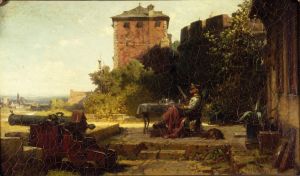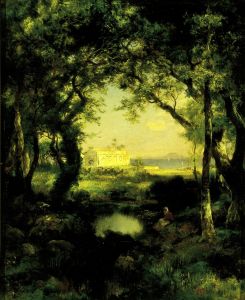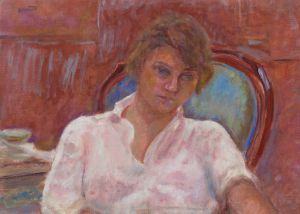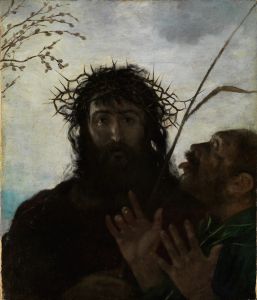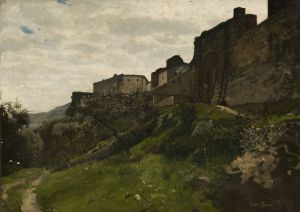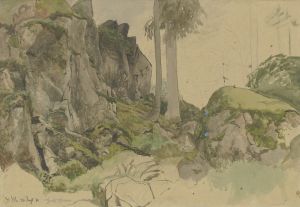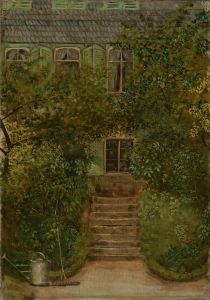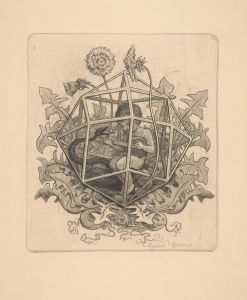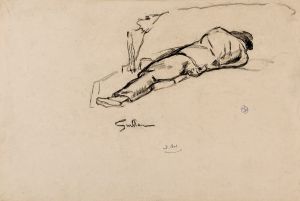
A young boy on a bench with flower pots and a wicker basket
A hand-painted replica of Hans Thoma’s masterpiece A young boy on a bench with flower pots and a wicker basket, meticulously crafted by professional artists to capture the true essence of the original. Each piece is created with museum-quality canvas and rare mineral pigments, carefully painted by experienced artists with delicate brushstrokes and rich, layered colors to perfectly recreate the texture of the original artwork. Unlike machine-printed reproductions, this hand-painted version brings the painting to life, infused with the artist’s emotions and skill in every stroke. Whether for personal collection or home decoration, it instantly elevates the artistic atmosphere of any space.
Hans Thoma was a German painter born on October 2, 1839, in Bernau in the Black Forest region. He is known for his detailed and realistic style, often depicting scenes from nature and everyday life. Thoma's work is characterized by its clarity, precision, and a certain romanticism that reflects his deep connection to the German landscape and culture.
"A Young Boy on a Bench with Flower Pots and a Wicker Basket" is one of Thoma's lesser-known works. While there is limited specific information available about this particular painting, it is consistent with Thoma's broader body of work, which often includes portraits and genre scenes that capture the simplicity and beauty of rural life.
Thoma's artistic journey began with his studies at the Karlsruhe Academy of Fine Arts, where he was influenced by the Nazarene movement, which sought to revive honesty and spirituality in Christian art. His early work was also shaped by his exposure to the works of the Old Masters during his travels in Italy and France. These experiences helped him develop a style that combined traditional techniques with a modern sensibility.
Throughout his career, Thoma was associated with the Munich Secession, a group of artists who broke away from the traditional art institutions in Germany to pursue more progressive and individualistic approaches to art. This affiliation allowed him to exhibit his work more freely and gain recognition among his contemporaries.
Thoma's paintings often feature serene landscapes, idyllic rural scenes, and portraits that convey a sense of tranquility and harmony. His attention to detail and ability to capture the essence of his subjects made him a respected figure in the German art scene of the late 19th and early 20th centuries.
In "A Young Boy on a Bench with Flower Pots and a Wicker Basket," Thoma likely employs his characteristic attention to detail and composition. The painting presumably depicts a young boy seated on a bench, surrounded by flower pots and a wicker basket, elements that suggest a connection to nature and domestic life. This scene, like many of Thoma's works, may evoke a sense of nostalgia and simplicity, reflecting the artist's appreciation for the beauty of everyday moments.
Thoma's work gained significant recognition during his lifetime, and he was appointed director of the Karlsruhe Academy of Fine Arts in 1899. His influence extended beyond his paintings, as he played a crucial role in shaping the next generation of German artists through his teaching and leadership.
Hans Thoma passed away on November 7, 1924, in Karlsruhe, Germany. Today, his works are held in various collections and museums, including the Kunsthalle Karlsruhe, which houses a significant number of his paintings. Thoma's legacy continues to be celebrated for its contribution to German art and its ability to capture the timeless beauty of the natural world and human experience.






